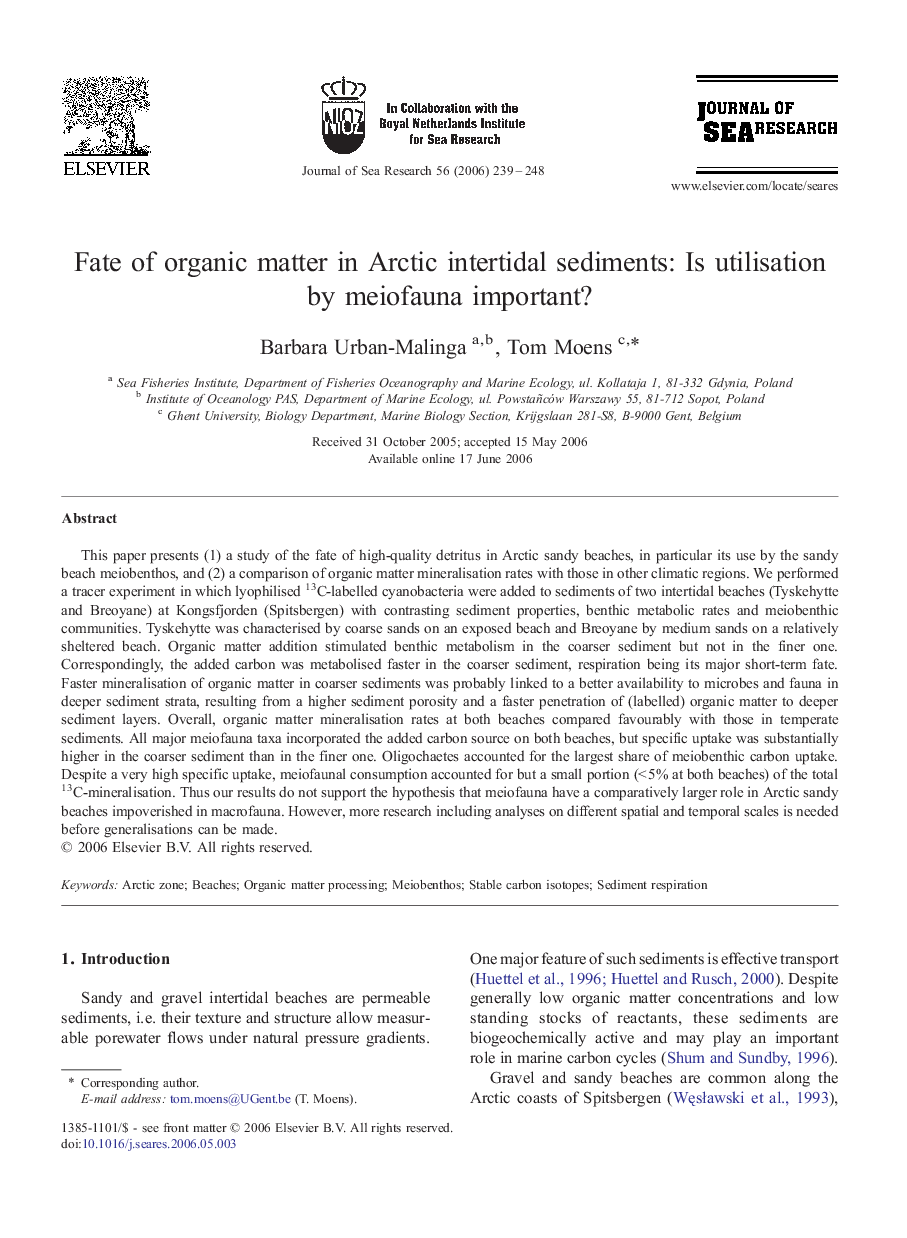| Article ID | Journal | Published Year | Pages | File Type |
|---|---|---|---|---|
| 4550536 | Journal of Sea Research | 2006 | 10 Pages |
This paper presents (1) a study of the fate of high-quality detritus in Arctic sandy beaches, in particular its use by the sandy beach meiobenthos, and (2) a comparison of organic matter mineralisation rates with those in other climatic regions. We performed a tracer experiment in which lyophilised 13C-labelled cyanobacteria were added to sediments of two intertidal beaches (Tyskehytte and Breoyane) at Kongsfjorden (Spitsbergen) with contrasting sediment properties, benthic metabolic rates and meiobenthic communities. Tyskehytte was characterised by coarse sands on an exposed beach and Breoyane by medium sands on a relatively sheltered beach. Organic matter addition stimulated benthic metabolism in the coarser sediment but not in the finer one. Correspondingly, the added carbon was metabolised faster in the coarser sediment, respiration being its major short-term fate. Faster mineralisation of organic matter in coarser sediments was probably linked to a better availability to microbes and fauna in deeper sediment strata, resulting from a higher sediment porosity and a faster penetration of (labelled) organic matter to deeper sediment layers. Overall, organic matter mineralisation rates at both beaches compared favourably with those in temperate sediments. All major meiofauna taxa incorporated the added carbon source on both beaches, but specific uptake was substantially higher in the coarser sediment than in the finer one. Oligochaetes accounted for the largest share of meiobenthic carbon uptake. Despite a very high specific uptake, meiofaunal consumption accounted for but a small portion (< 5% at both beaches) of the total 13C-mineralisation. Thus our results do not support the hypothesis that meiofauna have a comparatively larger role in Arctic sandy beaches impoverished in macrofauna. However, more research including analyses on different spatial and temporal scales is needed before generalisations can be made.
